(With excerpts from the reminiscences recorded by Smt. B. Tara Bai, one of the Founder Members of the Blind Relief Association)
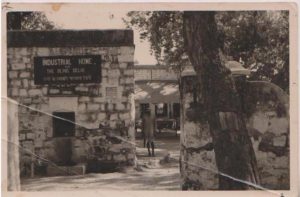
To have a look at the humble start of the Blind Relief Association, the calendars will have to roll back as far as February 1944.
And, this was how the dramatic occurrence came to be.
Its founders, Smt. Anasuyabai Basrurker, a medical practitioner and Shri U.A. Basrurker, an engineer were well known in the neighborhood for their generosity and their burning desire to help the poor and lowly.
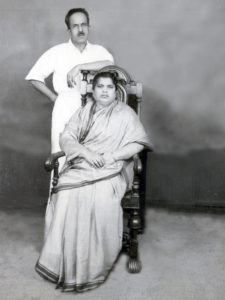
Once in 1942, a blind man came to Smt. Basrurker’s doors asking for financial help. Long after an immediate relief was given, this man and his helplessness remained in her mind as she kept thinking of ways and means to help, not just one such man but many others like him. At that time, Shri Basrurker was in the Ferozepur Jail, for his part in the National Movement of 1942. It so happened that at that very time, he was reading Charles Dickens’ “American Notes.” The description in it of the Perkins Institution for the Blind in Boston, and of its then most famous inmate Laura Bridgeman who was blind, deaf and dumb and had no sense of smell and hardly any of taste, but was taught to overcome all of it by the patience and love displayed by that outstanding teacher of the blind – Dr. Samuel Howe – made a deep and lasting impression on Shri Basrurker’s mind.
After his release, the two along with some like-minded friends, discussed the 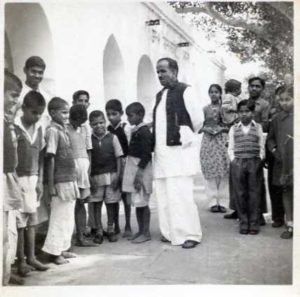
problem of the blind in India and what could be done to rehabilitate them. Charity merely added to their feeling of helplessness, inferiority and frustration. But if charity based on public generosity were to be organized along systematic channels, it would give the blind self-confidence and a sense of purpose in life. This could be achieved only by complete rehabilitation – psychological, physical and economic. With this aim in view, the Blind Relief Association was founded on February 26, 1944.
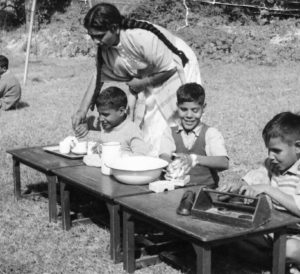 With generous responds from friends to the appeal of the couple, in 1946 the Industrial Home and School for the Blind was opened in a rented building with fairly spacious grounds at Badarpur which was about 14 miles from Delhi. The School started with two boys, but the number of pupils increased very rapidly. Shri Basrurker strove hard and got a site for a building in the present Lal Bahadur Shastri Marg whose foundation stone was laid by one of the greatest women of the century, Helen Keller when she visited Delhi in 1955.
With generous responds from friends to the appeal of the couple, in 1946 the Industrial Home and School for the Blind was opened in a rented building with fairly spacious grounds at Badarpur which was about 14 miles from Delhi. The School started with two boys, but the number of pupils increased very rapidly. Shri Basrurker strove hard and got a site for a building in the present Lal Bahadur Shastri Marg whose foundation stone was laid by one of the greatest women of the century, Helen Keller when she visited Delhi in 1955.
But fate took the founders away before the grand dream of a workshop, hostel, school and auditorium was realized. Towards the end of 1957 Smt. Basrurker fell a victim to a fatal disease and died on 4 June, 1958. Shri Basrurker followed her before the year could end and the Industrial Home and School for the Blind became a real orphan.
Bad days befell the Association for want of finances. Through the efforts of Shri 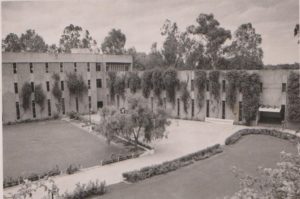 K.N. Nayar, the devoted and loyal secretary to Shri Basrurker who served as the Executive Secretary and Smt. Durgabai Deshmukh, President with many other associates and friends of Shri and Smt. Basrurker, the project was resurrected. Smt. Durgabai Deshmukh was an Indian freedom fighter, lawyer, social worker, politician and a crusader for women’s education. Her dynamic personality, perseverance, devotion and vision electrified the whole atmosphere.
K.N. Nayar, the devoted and loyal secretary to Shri Basrurker who served as the Executive Secretary and Smt. Durgabai Deshmukh, President with many other associates and friends of Shri and Smt. Basrurker, the project was resurrected. Smt. Durgabai Deshmukh was an Indian freedom fighter, lawyer, social worker, politician and a crusader for women’s education. Her dynamic personality, perseverance, devotion and vision electrified the whole atmosphere.
Funds started coming in, construction work resumed and new buildings were added. The then Prime Minister, Smt. Indira Gandhi on July 30, 1966, inaugurated the building.
Later under the leadership of Dr. Bharat Ram, a distinguished industrialist and philanthropist and Justice Dr. A. S. Anand, former Chief Justice of India, the Association expanded its activities by various new programs that the timeline displays.
In its 75 years of existence, the present Blind Relief Association, which was never seen by its founders, continues to realize their vision fulfilled in every visually impaired person that it reaches out to.

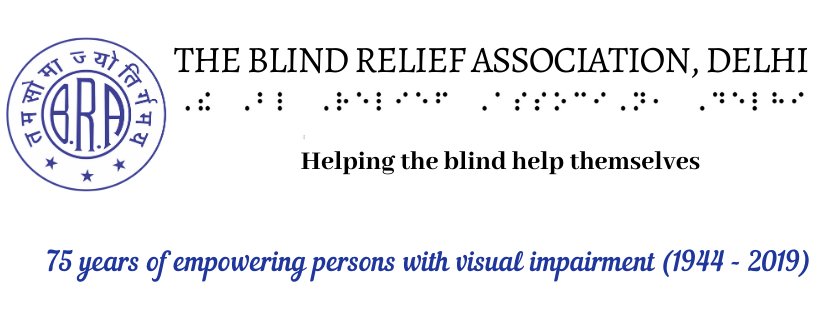
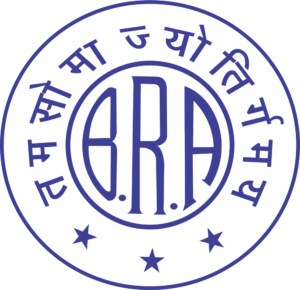



 With generous responds from friends to the appeal of the couple, in 1946 the Industrial Home and School for the Blind was opened in a rented building with fairly spacious grounds at Badarpur which was about 14 miles from Delhi. The School started with two boys, but the number of pupils increased very rapidly. Shri Basrurker strove hard and got a site for a building in the present Lal Bahadur Shastri Marg whose foundation stone was laid by one of the greatest women of the century, Helen Keller when she visited Delhi in 1955.
With generous responds from friends to the appeal of the couple, in 1946 the Industrial Home and School for the Blind was opened in a rented building with fairly spacious grounds at Badarpur which was about 14 miles from Delhi. The School started with two boys, but the number of pupils increased very rapidly. Shri Basrurker strove hard and got a site for a building in the present Lal Bahadur Shastri Marg whose foundation stone was laid by one of the greatest women of the century, Helen Keller when she visited Delhi in 1955. K.N. Nayar, the devoted and loyal secretary to Shri Basrurker who served as the Executive Secretary and Smt. Durgabai Deshmukh, President with many other associates and friends of Shri and Smt. Basrurker, the project was resurrected. Smt. Durgabai Deshmukh was an Indian freedom fighter, lawyer, social worker, politician and a crusader for women’s education. Her dynamic personality, perseverance, devotion and vision electrified the whole atmosphere.
K.N. Nayar, the devoted and loyal secretary to Shri Basrurker who served as the Executive Secretary and Smt. Durgabai Deshmukh, President with many other associates and friends of Shri and Smt. Basrurker, the project was resurrected. Smt. Durgabai Deshmukh was an Indian freedom fighter, lawyer, social worker, politician and a crusader for women’s education. Her dynamic personality, perseverance, devotion and vision electrified the whole atmosphere.